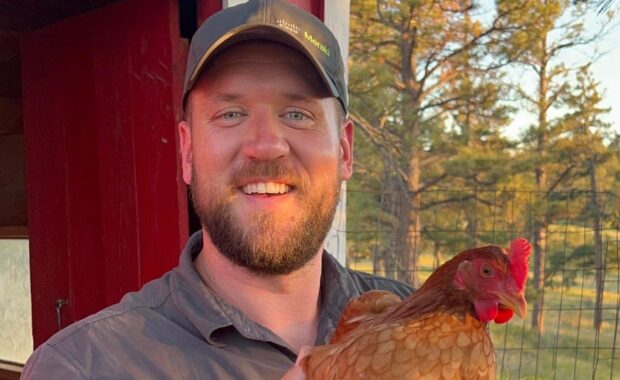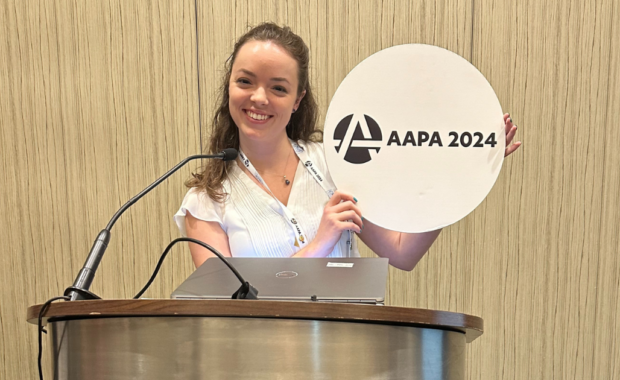For PA Mohammad Faisal, Teamwork is Key to Providing Care After a Mass Casualty Event
PA Faisal was part of a care group that successfully stabilized 19 gunshot victims in Baltimore, Maryland
October 3, 2023
By Jennifer Walker

It seemed like a typical workday when Mohammad Faisal, PA-C started his overnight shift at MedStar Harbor Hospital in Baltimore, Maryland on July 2, 2023. The 20-room emergency department (ED), which had 32 patients at the time, was full. The two resuscitation bays were open in case of emergencies, and the fast track area—a section of the ED with seven smaller treatment spaces used during the day for low-acuity patients—was closed for the night.
Then at 12:39 a.m., a patient came through the ED doors with a minor gunshot wound, a graze. Shortly after, two more critical patients arrived, one who was shot in the abdomen, the other who was shot in the chest, both wounds actively bleeding. Another was shot in the leg. And on and on it went as person after person, all with gunshot wounds and most driven to the hospital by their friends or family, arrived at the hospital in quick succession.
“Within 30 minutes of the first patient walking in, we had 18 more,” says Faisal, adding that 14 of the gunshot victims were teenagers, nine of whom were minors. “Understandably, they’re all worked up and emotional and crying. There was a lot of reeling and screaming.”
Later, Faisal and the staff at MedStar Harbor would learn that there was a mass shooting at the nearby Brooklyn Homes during Brooklyn Day, an annual summer celebration that draws several hundred people each year. In the neighborhood of Brooklyn, Maryland, located two miles from the hospital, two people were killed and 28 were wounded in what is thought to be the largest shooting incident in Baltimore’s history, according to the Baltimore City Police Department.
For the MedStar Harbor team, treating so many patients at once was unprecedented. “We are a small community hospital, we have limited staff, and we don’t have trauma specialists or general surgeons in house,” Faisal says. “And then we had 19 patients come in with their parents and family members. So, it was a chaotic situation initially. Our job was to stabilize the patients and get them transferred to dedicated trauma centers.”
Finding a Niche in Emergency Medicine
A respiratory therapist for seven years, Faisal began his PA career in orthopaedics. “I liked the aspect of working one-on-one with a physician. That appealed to me initially,” says Faisal, who spent four years in the specialty. “But orthopaedics is a very specialized practice. I was only utilized in the OR. I missed seeing patients in clinic and doing the diagnostic workup. That’s what made me switch to emergency medicine.”
Faisal joined the ED at MedStar Harbor Hospital in 2021. There, he works three overnight shifts a week, seeing patients who have a variety of symptoms and ailments, from upper respiratory infections to injuries to chest and abdominal pain. He enjoys these hours because he finds that the patients who come for care at night have more complex cases.
“Sometimes the patients are coming to the ED because they don’t have access to primary care,” Faisal says. “But in the middle of the night, we see more patients who are in need of emergency care. They are mostly coming in for something serious. For me, it is more interesting.”
Although Faisal’s days in the ED always look different, he was part of a team providing care to a large number of patients at once for the first time on that night in July. “We have trainings to deal with these mass casualty events, but you can never prepare for them until you’re actually in one,” he says. “At that point, you’re just trying to figure out the best way to cope.”
Teamwork Leads to Successful Outcomes
On that early Sunday morning, Faisal, along with Neil Majmundar, MD and seven nurses, were on staff in MedStar Harbor’s emergency department. Alfie Mingo, MD, was also in the ED and getting ready to leave after finishing his shift.
Then the gunshot victims started arriving. With the ED full, the team worked quickly to find space for all the patients by preparing the resuscitation bays and opening the fast track area. Patients who were friends and stable were ultimately placed in the same room. An announcement was made asking all available providers to head to the emergency department. “Several inpatient staff members came to the ED to assist,” Faisal says.

Majmundar and the nursing staff rapidly attended to the patient with the abdominal wound and the patient with the chest wound, as they were the most critical. For the remaining patients, there wasn’t enough staff to triage and get their heart rate, blood pressure, and oxygen levels. So, Faisal and Mingo began walking around and talking to each patient and their families to assess their injuries using the ABCs of trauma assessment, including airway, breathing/oxygenation, and circulation. These assessments helped them determine patient care priorities.
“It was triaging by looking at them to see where the gunshot wounds were and talking to them,” Faisal says. “We looked at who had an abdominal, chest, or extremity wound and who was actively bleeding. Then, as long as the patients were talking to us, and we could see that there was no active bleeding, those patients were stable and didn’t need attention right away. Fortunately, most of them were extremity gunshot wounds that were stable.”
Throughout the night, the MedStar Harbor team continued to treat the victims of the Brooklyn Homes shooting. Faisal provided care to one of the critical patients with an extremity gunshot wound and an apparent vascular injury with active bleeding; this patient ultimately required resuscitation with blood products before being transferred to another facility. Nine other patients were also transferred to nearby hospitals with trauma centers. By 6:00 a.m., every patient was stable and most of the transfers had been complete.
This is when Christopher Wilbert, MD, MedStar Harbor’s chair of emergency medicine, held a huddle with the staff. “We talked about what happened and what we thought we could do better,” Faisal says. “They were also letting us know that there are certain resources available if we have any questions or concerns or if anybody was affected psychologically.” Then, when their shift was over, Faisal and the other providers went to breakfast to go through the events of the night. “I think that helped everybody to talk it out,” he adds.
Now, nearly three months later, Faisal reflects on what inspires him to continually push himself as a PA, as he did on that night in July and as he does every day. He says the constant opportunities for learning in emergency medicine inspire him to grow in his career. “It’s such a generalized field, and it’s nonstop,” he says. “The way to go beyond is to continue to provide patient-centered quality care while also committing to lifelong learning.”
He also had some advice for PAs who might find themselves providing care after mass casualty events: “Teamwork, teamwork, teamwork,” he says. “It’s going to get you through these situations.”
Jennifer Walker is a freelance writer in Baltimore, MD. Contact Jennifer at [email protected].
You May Also Like
From Addiction and Tragedy, PA Josh Thornhill Treats Body and Soul
PAs Help Provide Care to Las Vegas Shooting Victims
PAs Respond in El Paso Shooting Aftermath
PAs Lead National Stop the Bleed Day
Thank you for reading AAPA’s News Central
You have 2 articles left this month. Create a free account to read more stories, or become a member for more access to exclusive benefits! Already have an account? Log in.



